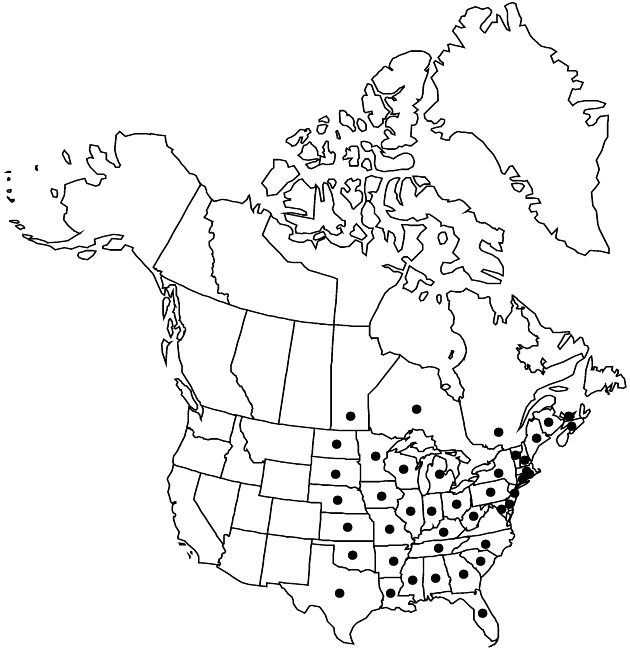Solidago nemoralis subsp. nemoralis
Basal leaves oblanceolate to obovate, usually crenate. Involucres usually 2.6–4.2+ mm (larger in tetraploids). Disc corolla lobes 0.5–0.9(–1) mm. Cypselae usually only sparsely strigose; pappi usually not or barely exceeding ray corolla tubes and bases of disc corolla lobes. 2n = 18, 36.
Phenology: Flowering Aug–Oct(–Nov, s).
Habitat: Open sandy, gravelly, and clay soils, disturbed sites, roadsides, prairies, fields
Elevation: 0–1000+ m
Distribution

Man., N.B., N.S., Ont., P.E.I., Que., Ala., Ark., Conn., Del., Fla., Ga., Ill., Ind., Iowa, Kans., Ky., La., Maine, Md., Mass., Mich., Minn., Miss., Mo., Nebr., N.H., N.J., N.Y., N.C., N.Dak., Ohio, Okla., Pa., R.I., S.C., S.Dak., Tenn., Tex., Vt., W.Va., Wis.
Discussion
Subspecies nemoralis is found in the open, disturbed soils of fields, roadsides, and gravelly embankments in the eastern deciduous forest area. Plants of the southeastern United States with a few elongated proximal branches in the arrays have been treated as var. haleana; that trait occurs farther north on occasion and not all shoots of the same plant have it. It is treated here as a synonym of the typical subspecies. Diploids occur throughout the range; tetraploids are scattered.
Selected References
None.